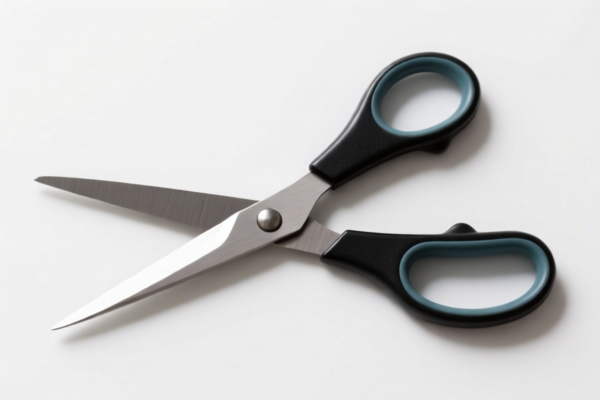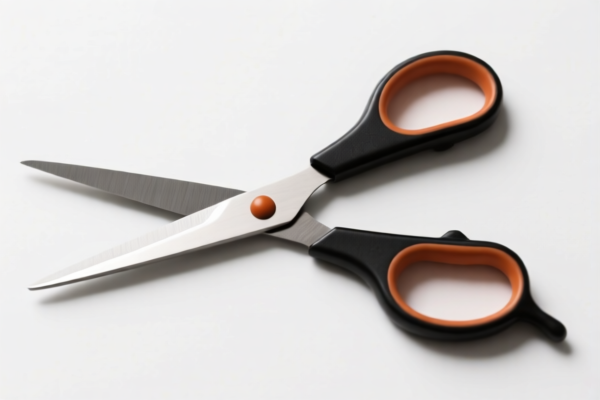| HS Code | Official Doc | Tariff Rate | Origin | Destination | Effective Date |
|---|---|---|---|---|---|
| 9601908000 | Doc | 41.2% | CN | US | 2025-05-12 |
| 9601902000 | Doc | 37.5% | CN | US | 2025-05-12 |
| 9602005080 | Doc | 40.2% | CN | US | 2025-05-12 |
| 9602005010 | Doc | 40.2% | CN | US | 2025-05-12 |
| 8213003000 | Doc | 1.7¢ each + 4.3%+30.0% | CN | US | 2025-05-12 |
| 8213009000 | Doc | 3¢ each + 3%+30.0% | CN | US | 2025-05-12 |
| 8214909000 | Doc | 1.4¢ each + 3.2%+30.0% | CN | US | 2025-05-12 |
| 8214906000 | Doc | 0.2¢ each + 3.1%+30.0% | CN | US | 2025-05-12 |




Embroidered Scissors
Embroidered scissors, also known as crewel scissors, are a specialized type of scissors designed for fine needlework, particularly embroidery, crewel work, and other delicate textile arts. They differ significantly from general-purpose scissors in their construction and intended use.
Material
Traditionally, embroidered scissors were crafted from high-quality steel, often hand-forged. Modern versions may utilize stainless steel for increased corrosion resistance. The handles are commonly made from steel, brass, ivory, bone, wood, or plastic, with decorative embellishments frequently present. Antique examples often feature ornate metalwork or carved detailing.
Purpose
The primary purpose of embroidered scissors is to precisely cut threads in embroidery, crewel, cross-stitch, quilting, and other needlework applications. They are not intended for cutting fabric or other heavy materials.
Function
Embroidered scissors are characterized by their long, slender blades and pointed tips. This design allows for accurate maneuvering within the fabric and precise cutting of individual threads without damaging the surrounding material. The long shanks (handles) provide greater control and allow the user to comfortably hold the scissors while working intricate designs. The pointed tips are useful for picking out stitches or separating threads.
Usage Scenarios
- Embroidery: Cutting embroidery floss, silk threads, and other fine threads.
- Crewel Work: Precisely trimming threads in crewel embroidery designs.
- Cross-Stitch: Cutting threads close to the fabric without disrupting the stitches.
- Quilting: Used for snipping threads during appliqué or other detailed quilting work.
- Needlepoint: Cutting threads for needlepoint projects.
- Seam Ripper Alternative: While not their primary function, they can be used for carefully removing individual stitches.
- Thread Nest Management: Useful for untangling and cutting thread nests in embroidery hoops.
Common Types
- Crewel Scissors: The most common type, with long, slender blades and pointed tips. Typically 3.5 to 5 inches in length.
- Milliner's Scissors: Similar to crewel scissors, but often slightly shorter and more robust. Used for trimming lace and ribbons as well as embroidery.
- Stork Scissors: Characterized by a distinctive curved blade and handle resembling a stork's beak. Used for detailed work and cutting curves.
- Antique Embroidered Scissors: Highly collectible, often featuring ornate designs and crafted from precious materials. These can vary significantly in size and style.
- Modern Embroidered Scissors: Available in a variety of materials and finishes, often with ergonomic handles for increased comfort. Some feature specialized blade coatings to prevent thread fraying.
Embroidered scissors are scissors designed for embroidery work, typically with fine points for precise cutting of threads and fabrics. They are used in textile arts, crafts, and tailoring.
The following HS codes may be relevant:
- 8213003000: Scissors, tailors' shears and similar shears, and blades and other base metal parts thereof: Valued not over $1.75/dozen. This code applies to scissors with a value not exceeding $1.75 per dozen. The '82' chapter covers cutlery, and '13' specifically denotes scissors, shears, and similar shears. '003000' indicates a valuation threshold.
- 8213009000: Scissors, tailors' shears and similar shears, and blades and other base metal parts thereof: Valued over $1.75/dozen: Other (including parts). This code applies to scissors valued over $1.75 per dozen, encompassing various types and parts. The '82' chapter covers cutlery, '13' denotes scissors, shears, and similar shears, and '009000' signifies a valuation exceeding the specified threshold.
- 8214909000: Other articles of cutlery (for example, hair clippers, butchers' or kitchen cleavers, chopping or mincing knives, paper knives); manicure or pedicure sets and instruments (including nail files); base metal parts thereof: Other: Other (including parts). This code covers other cutlery articles, including manicure and pedicure instruments, and their parts. '82' represents cutlery, '14' denotes other articles of cutlery, and '909000' signifies a broad 'other' category.
Regarding HS code 8213003000 and 8213009000, the valuation is a key factor in determining the correct code. If the scissors are valued at or below $1.75 per dozen, use 8213003000; otherwise, use 8213009000.
Customer Reviews
No reviews yet.